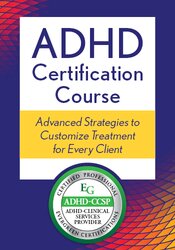Kids and ADHD Meds: What Every Parent Needs to Know

Navigating the world of ADHD medication with your child can be overwhelming, but it doesnŌĆÖt have to be scary. With each option having its own set of benefits and potential side effects, itŌĆÖs essential for parents to be well-informed and proactive. Understanding the nuances of ADHD treatments, and working closely with your childŌĆÖs medical provider can help you confidently manage your child's ADHD alongside the prescribing professional. This collaborative approach helps you make the choice that best supports your child' unique needs and helps them reach their full potential. How can parents make informed choices? Not everyone is a pharmaceutical expert, after all. LetŌĆÖs break it down with some help from Dr. Ari Tuckman, one of the worldŌĆÖs leading ADHD experts.
Keep helpful information about ADHD medications and other useful ADHD tips for parents on hand with . It provides a quick and easy reference to essential details, making it a valuable resource for parents looking to understand and manage their childŌĆÖs ADHD better. Having this infographic ready and available when consulting with your childŌĆÖs medical provider can be very beneficial. While the provider ultimately does the prescribing, being informed allows you to ask the right questions and feel confident in the prescriberŌĆÖs decisions.
ADHD Medication for Children
Stimulants are currently the most researched ADHD medication on the market. They have been shown to significantly improve attention, focus, and impulse control, making them a great treatment for many children. There are two different types of stimulants on the market, extended-release stimulants, and short-acting stimulants. Extended-release stimulants, including Concerta, Focalin XR, Adderall XR, and Vyvanse, are often favored by parents due to their long-lasting 8-12 hour duration, but are the more expensive option. On the other hand, short-acting versions may be more budget-friendly, however, they may cause fluctuations in behavior. Short-acting medications may also mean that you must schedule multiple doses per day, which may open the door to missed doses.ADHD Medication Side Effects
Many parents want the ADHD medication for children with the least side effects, but you need to know what could happen when your child starts treatment. The most common side effect of stimulants is appetite suppression, which is most noticeable when the medication is active. This can lead to weight loss, so itŌĆÖs important to ensure that your child eats well before and after taking their medication. In addition to this, taking the medication too late in the day might make your child feel restless or have trouble sleeping, therefore, many prescribers recommend giving your child their medication early in the morning. Another common side effect is called ŌĆ£rebound,ŌĆØ where children may feel irritable or off for about an hour as the medication wears off. While these side effects can be uncomfortable, theyŌĆÖre generally not harmful and will subside once the medicationŌĆÖs effects diminish by the end of the day. Typically, side effects improve within a week or two after a dose increase. If side effects continue, your childŌĆÖs doctor might switch to a different medication. Everyone responds differently to stimulants, so finding the right one can take time. In addition to stimulants, non-stimulants are a great option for your child for various medical reasons or in tandem with stimulants.The Best ADHD Medication Dose for Your Child
The most common concern when it comes to medications is side effects. While side effects can be scary, they are helpful signs your childŌĆÖs ADHD medication dose is too high. To find the optimal dose, itŌĆÖs common for your prescriber to start your child off with a low dose and gradually increase it until the right balance between benefits and side effects is achieved. New adjustments are typically made every 3-7 days. If side effects are troublesome, allowing a few extra days for your child to adjust can help.Keep helpful information about ADHD medications and other useful ADHD tips for parents on hand with . It provides a quick and easy reference to essential details, making it a valuable resource for parents looking to understand and manage their childŌĆÖs ADHD better. Having this infographic ready and available when consulting with your childŌĆÖs medical provider can be very beneficial. While the provider ultimately does the prescribing, being informed allows you to ask the right questions and feel confident in the prescriberŌĆÖs decisions.
ADHD Training for Parents

ADHD expert Dr. Ari Tuckman has helped thousands of parents ditch their frustrations and worries of ŌĆ£doing it wrongŌĆØ by giving them the right tools. Now in bite-sized videos that fit your schedule, he'll share what really works!
Create calm in your home, confidently tackle behavior challenges, and unlock your child's full potential whether your kiddo is barely out of diapers or about to head off to college.
Create calm in your home, confidently tackle behavior challenges, and unlock your child's full potential whether your kiddo is barely out of diapers or about to head off to college.
Get advanced strategies to customize treatment for every client

In this uniquely comprehensive and detailed ADHD certification course you get real-world solutions for women, BIPOC individuals, parents and their kids, clients in complex and dynamic relationships, adults at work, AND MORE!
Learn with our hand-selected panel of world-leading ADHD clinicians and researchers to gain specialized skills for your immediate clinical needs.
Learn with our hand-selected panel of world-leading ADHD clinicians and researchers to gain specialized skills for your immediate clinical needs.
Meet the Expert:
Ari Tuckman, PsyD, MBA, is a psychologist, international presenter, author, and ADHD expert. He is the author of four books on adult ADHD ŌĆō one for clinicians and three for the general public. He has also written several book chapters and is a frequent author for ADHD-related publications, including ADDitude Magazine and Attention Magazine.
Learn more about his educational products, including upcoming live seminars, by clicking here.
Learn more about his educational products, including upcoming live seminars, by clicking here.



